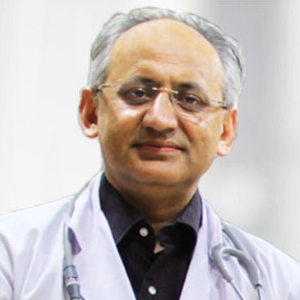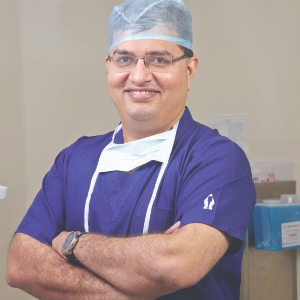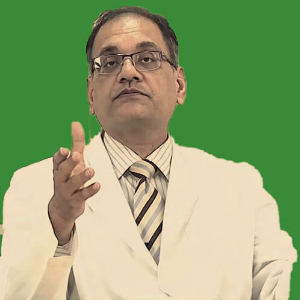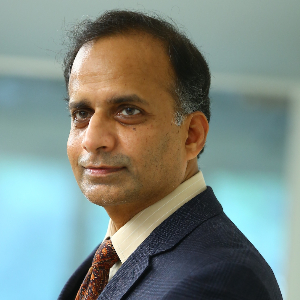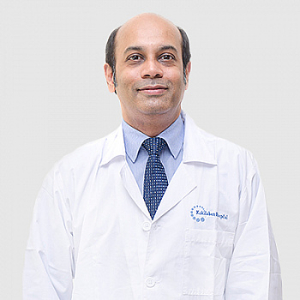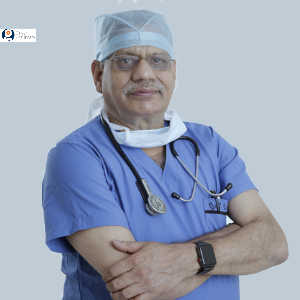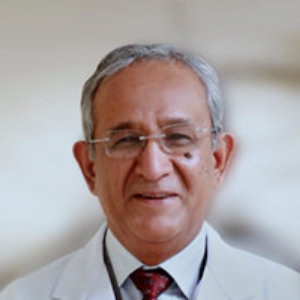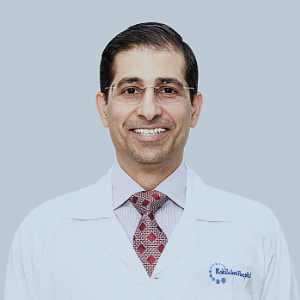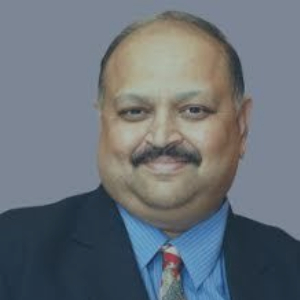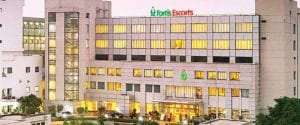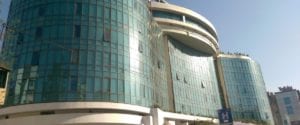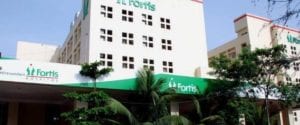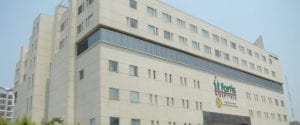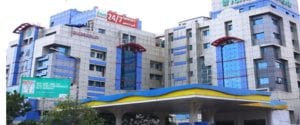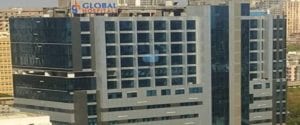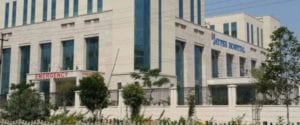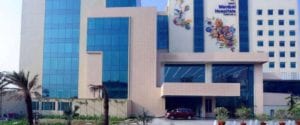Best Limb Lengthening Surgery Doctors in India
- Orthopedic Surgeon, Gurugram, India
- Over 25 years’ experience
Profile Highlights:
- Dr. Ravi Sauhta is a renowned Orthopedic Surgeon in India with 25+ years of experience in Joint Replacement and Reconstruction surgeries.
- He was the first surgeon in India to use minimally invasive AO techniques for trauma and also introduced reconstructive pelvic acetabular surgery and reconstructive bone tumor surgery in 1995.
- Pediatric Orthopedic Surgeon, Gurugram, India
- Over 24 years’ experience
Profile Highlights:
- Dr. Sanjay Sarup is a leading Orthopedic Surgeon with over 24 years of experience during which he has been associated with the best hospitals in the country.
- He performs a number of orthopedic procedures that includes surgery for correcting Scoliosis and Kyphosis, Club foot, dislocated hips, and hip deformity since birth among several other procedures.
- Dr. Sarup received his training in orthopedic surgery from leading hospitals in India and UK and holds a Fellowship of the Royal Hospital for Sick Children, Glasgow in Pediatric Orthopedics.
- Pediatric Orthopedic Surgeon, Gurugram, India
- Over 20 years’ experience
Profile Highlights:
- Dr. Manoj Padman is a renowned Pediatric Orthopedic surgeon in India specializing in the management and treatment of diseases and disorders of the musculoskeletal system in young children.
- Dr. Manoj Padman is considered one of the best surgeons in India for the correction of deformities and congenital defects in children. His primary interest includes birth anomalies, hip pathologies, post-infective and post-traumatic sequelae, and limb reconstruction surgeries.
- Orthopedic Surgeon & Spine Surgeon, Gurugram, India
- Over 25 years’ experience
Profile Highlights:
- Dr. Vineesh Mathur is an accomplished and renowned Orthopedic Surgeon in India specializing in Spine Surgery.
- He holds an extensive experience of 25+ years in the field of orthopedics and spinal surgery and has performed over 6000 independent surgeries till date.
- Dr. Vineesh Mathur is highly trained in all kinds of spinal procedures and received training in the procedures from distinguished institutes in India, Spain, Turkey, USA, South Korea, and Denmark
- Orthopedic surgeon, Chennai, India
- Over 35 years’ experience
Profile Highlights:
- Dr. A B Govindaraj is a leading Orthopedic surgeon who holds an extensive experience of more than 3 decades in the field and performs over 300 joint replacement surgeries annually.
- He excels in unilateral and bilateral total knee replacement, total hip replacement, and shoulder replacement surgeries.
- Pediatric Orthopedic Surgeon, Mumbai, India
- Over 15 years’ experience
Profile Highlights:
- Dr. Alaric Aroojis is a renowned Pediatric Orthopedic Surgeon in Mumbai and his expertise and primary area of specialization lie in deformity correction, cerebral palsy, and congenital anomalies. He is also an expert in performing complex pelvic osteotomy for congenital hip dislocation in young patients.
- He holds an extensive experience of more than 15 years in Pediatric Orthopedics and is highly skilled at using minimally invasive procedures for difficult limb deformity corrections.
- Orthopedic Surgeon, Hyderabad, India
- Over 30 years’ experience
Profile Highlights:
- Dr. B N Prasad is a well-known Orthopedic Surgeon with over 3 decades of experience.
- Dr. B N Prasad is among the few surgeons in the country to specialize in both adult and pediatric orthopedics and has taken up numerous cases and treated patients with excellent outcomes.
- He provides diagnostic as well as surgical treatment for various types of orthopedic disorders such as arthritis and osteoporosis.
- Orthopedic Surgeon, Gurugram, India
- Over 40 years’ experience
Profile Highlights:
- Dr. B K Singh is one of the best Orthopedic Surgeons in India with experience encompassing over 4 decades.
- He holds the credit for over 5000 Arthroplasty procedures and is one of the few surgeons in India with expertise in Robotic Knee and Hip Replacement Surgeries.
- Dr. B K Singh received his training in Joint Replacement Surgery and Robotic Knee and Hip replacement procedures from India, UK, and Japan.
- Orthopedic Surgeon, Mumbai, India
- Over 22 years’ experience
Profile Highlights:
- Dr. Dinshaw Pardiwala is an Orthopedic Surgeon par excellence specializing in shoulder replacement and sports injuries surgeries.
- With several firsts to his name, he performed the first Reverse Shoulder Replacement surgery, the first Navigation guided ACL Repair and the first Autologous Chondrocyte Stem Cell Transplant in India.
- Dr. Dinshaw Pardiwala introduced the Osteochondral Allograft Transfer and Transplant in India.
- Orthopedic Surgeon & Spine Surgeon, Mumbai, India
- Over 20 years’ experience
Profile Highlights:
- Dr. Gautam Zaveri is one of the best spine surgeons in India today and has performed over 3000 spinal surgeries for the treatment of spinal fractures, trauma, slipped discs, kyphosis, scoliosis, sciatica, spondylolisthesis, and spinal stenosis.
- Dr. Zaveri specializes in Minimally Invasive Spine Surgeries commonly known as MISS and performs most of his procedures using this technique to minimize cuts and speed up the recovery process.
Best Limb Lengthening Surgery Hospitals in India
Fortis Escorts Hospital, New Delhi
- City: New Delhi, India
Hospital Highlights:
- Over the last 33 years, the Fortis Escorts Heart Institute has set new standards in cardiac treatment with groundbreaking research. It is now known around the world as a centre of expertise for Cardiac Bypass Surgery, Interventional Cardiology, Non-invasive Cardiology, Paediatric Cardiology, and Paediatric Cardiac Surgery.
- The hospital has cutting-edge laboratories that perform a wide range of diagnostic tests in Nuclear Medicine, Radiology, Biochemistry, Haematology, Transfusion Medicine, and Microbiology.
- Fortis Escorts Heart Institute boasts a diverse group of bright and experienced doctors who are backed up by a team of highly qualified, experienced, and devoted support professionals as well as cutting-edge equipment such as the recently installed Dual CT Scan.
- Approximately 200 cardiac doctors and 1600 personnel currently collaborate to manage over 14,500 admissions and 7,200 emergency situations each year. The hospital now has a 310-bed infrastructure, as well as five cath labs and a slew of other world-class amenities.
Rela Hospital, Chennai
- City: Chennai, India
Hospital Highlights:
- RIMC is a multi-specialty hospital in a sprawling area of 36 acres located in Chromepet, Chennai, Tamil Nadu, India.
- The facility has 450 beds including 130 critical care beds, 9 operating rooms, modern reference laboratories and radiology services, and is conveniently located near road, rail and air transportation.
- RIMC is led and managed by world-renowned physicians committed to healthcare.
- RIMC offers the broadest range of clinical care, education, and research. The hospital offers state-of-the-art technology and modern treatment facilities designed to provide health care at an affordable cost.
- Rela Institute is driven by patient needs, comfort and confidence.
CARE Hospitals, Hyderabad
- City: Hyderabad, India
Hospital Highlights:
- CARE Hospitals were established in the year 2000, by CARE Group.
- The multispecialty hospital has 435 beds, including 120 critical care beds, with an annual inflow of 180000 outpatients and 16,000 in-patients.
- The hospital provides specialty medical services in Cardiology, Cardiothoracic Surgery, Pediatric Cardiology, Pediatric Cardiothoracic Surgery, Neurology, Neurosurgery, Nephrology, and Urology.
- The hospital has the first dual source, 128 slice CT scanner (for high precision cardiac imaging) – the first of its kind in south India.
- The hospital offers a wide range of accommodation facilities for the convenience of its varied patient base, ranging from general wards to super deluxe rooms.
Fortis Hiranandani Hospital, Mumbai
- City: Mumbai, India
Hospital Highlights:
- Fortis Hiranandani hospital was established in 2007.
- The hospital is an advanced tertiary care, multi-specialty hospital equipped with 149 beds.
- The hospital is equipped with a super ICU to provide emergency medical care to critically ill patients.
- The hospital is NABH accredited.
- The critical care facility in the hospital is augmented with the state-of-the-art facilities that facilitate speedier diagnosis and efficient monitoring.
- The hospital provides specialty medical services in cardiology, orthopedic science, pediatric science, neurology, diabetic care, urology, nephrology, ENT, obstetrics, gynecology, cosmetic surgery, bariatric surgery, neuro and spine care.
Fortis Hospital, Anandpur, Kolkata
- City: Kolkata, India
Hospital Highlights:
- Fortis Hospital, Anandapur, Kolkata is a world-class super-speciality equipped with the latest technologies in the medical world.
- The hospital is NABH accredited.
- This state-of-the-art facility specializes in cardiology and cardiac surgery, urology, nephrology, neurosciences, orthopaedics, digestive care, emergency care and critical care.
- The hospital, governed by integrated Building Management System (IBMS), has a pneumatic chute system, for quick vertical and horizontal transportation between floors, facilitating speedy transfer of patient specimens, documents, reports, and medicines to the concerned departments.
- The hospital also has a nephrology department with over 28 advanced dialysis units.
Fortis Hospital Banerghatta, Bengaluru
- City: Bengaluru, India
Hospital Highlights:
- Fortis Hospital Bannerghatta, Bengaluru was established in 2006.
- The hospital is a 276 bedded multi-specialty tertiary care facility.
- The hospital specializes in cutting-edge medical technology and dedicated patient care services.
- The hospital is equipped with state-of-the-art technologies like trans-radial angioplasty, trans-abdominal cardiac surgery, and computerized TKR navigation surgery.
- The hospital provides specialty medical services in cardiology, cardiac surgery, orthopedics, neurology, neuro-surgery, GI, and Minimal Access Surgery (MAS).
Fortis Hospital, Malar, Chennai
- City: Chennai, India
Hospital Highlights:
- Fortis Malar was established in 1992 and was formerly known as Malar Hospital.
- The hospital specializes in cutting-edge medical technology and dedicated patient care services.
- The hospital is multi-specialty, tertiary care facility with 180 beds.
- The hospital offers comprehensive medical care in specialties such as cardiology, cardio-thoracic surgery, neurology, neurosurgery, orthopedics, nephrology, gynecology, gastroenterology, urology, pediatrics, and diabetes.
Gleneagles Global Hospital, Parel, Mumbai
- City: Mumbai, India
Hospital Highlights:
- Gleneagles Global Hospital The 450-bed facility comprises of 17-stories, housing state-of-the-art infrastructure, and advanced medical care facilities.
- The hospital offers end-to-end clinical, surgical, and diagnostic services. It is equipped with a team of eminent medical professionals aided by qualified nurses and medical staff
- The Hospital offers advanced Endoscopic procedures, Hepatobiliary and Liver Surgeries, Surgical and Medical Gastroenterology, Bariatric Surgery, and Robotic surgery.
- The hospital is a center of excellence for Orthopedics, Joint Replacement, Knee Replacement, and Hip Replacement surgery.
Jaypee Hospital, Noida
- City: Noida, India
Hospital Highlights:
- Jaypee Hospital is the flagship hospital of the Jaypee Group.
- This hospital has commissioned 525 beds in the first phase and has been planned and designed as a 1200 bedded multi-specialty facility.
- It holds the accreditation of the NABH and NABL.
- The hospital has state-of-the-art infrastructure equipped with the latest technologies and modern equipment like 64 Slice PET CT, Dual Head 6 Slice SPECT CT, Gamma Camera, and Da Vinci Robotic Surgery for comprehensive robotic surgical solutions.
- It has special Centers dedicated to the major specialties to provide hassle-free and high-quality clinical care.
Manipal Hospital, Dwarka, Delhi
- City: New Delhi, India
Hospital Highlights:
- Manipal Hospitals, Dwarka, is a super-specialty hospital in Dwarka, New Delhi, which is a part of Manipal Hospitals Group.
- The hospital aims to provide the best treatment on par with international standards at a fraction of the cost.
- Equipped with 380 beds, the hospital is also one of the new age hospitals which are equipped fully with state-of-the-art infrastructure, cutting-edge technology as well as the latest and advanced clinical practices. The hospital also has 13 modular Operation theatres with 118 beds which are solely meant for critical care.
- The hospital comprises internationally acclaimed doctors and highly professional and experienced hospital and medical staff who are able to provide preventive, therapeutic, and diagnostic services all under one roof.
Limb Lengthening Surgery
Limb Lengthening is a surgical procedure where the bone in the leg is separated and distracted or pulled apart so that new bone can form in the gap, resulting in an increase of the length. This procedure is mainly recommended for patients suffering from leg deformities or stunted growth.
The bone, if broken or fractured regenerates itself over time, and the same tactical method is used along with external and internal medical assistance to conduct the limb lengthening surgery.
Technique used in Leg Lengthening
The principle for leg lengthening surgery is based on distraction osteogenesis where distraction stands for pulling apart and osteogenesis stands for formation of new bone.
The device used for the lengthening process is usually called a fixator and primarily, there are two types, namely, the Internal and the External Fixator. The Internal Fixators are implanted in the bone, inside the body attached to the marrow cavity of the bone like a brace while the external fixators are attached to the bone outside the body with the help of wires and pins.
Indications for Limb Lengthening Surgery
Limb Lengthening surgery is usually recommended in case of certain leg deformities but other primary causes for it can be-
- Trauma to the skeletal structure of the limb that results in shortening or deformity of the leg
- Congenital Limb length disorder
- Chronic infection of the bone or joints in the limb
- Pediatric hip disorders
- Soft tissue scarring
- Cosmetic enhancements
Symptoms for leg discrepancy varies from patient to patient. While in some patient the difference in the leg length can be visibly noticed, others might walk with a limp. In other patients, limb length issues may start with lower back pains or right after a serious leg trauma or injury.
Diagnostic Tests needed
Limb length differences at birth or visible length differences can be diagnosed at sight. However, before recommending the surgery, your doctor might ask you to attend some physical examinations to determine the root cause of the problem. Apart from X-Rays and Sonograms, or use a physical diagnostic method known as the Gait Analysis to determine the exact reason for this deformity. For detailed imaging diagnosis, doctors may even prescribe a CT Scan of the limbs.
Limb Lengthening Surgery
The surgical procedure is usually based on factors like the cause or size of the discrepancy or the patient’s age, reaction to medical procedures before or if the surgery is actually required or not. Because there are complications involved in the limb lengthening surgery, the medical team first determines if the condition can be treated in a non-surgical method. If the leg discrepancy is minute or negligible, the doctors might put the patient on observation to diagnose whether the condition is growing or not. Non-surgical methods also include wearing specialized shoes that provide an external lift to help ease activities like walking.
However, if the discrepancies are too prominent, the surgical procedure is suggested to stop or halt the limn differences.
Preparation for surgery
There are no exclusive preparation methods for this surgical procedure. However, patients are requested to help their medical team with a detailed breakdown of their past medical history including past or ongoing medications which includes herbal supplements, vitamins, homeopathy medicines, OTC or NSAIDs. Patients are also requested to ask their healthcare provider for any additional dietary regulations that they should follow before the surgery.
Explanation Video
Procedure
The surgery is performed under regional or general anaesthesia to avoid pain or discomfort during the surgery.
The lengthening procedure begins with the osteotomy process where the surgeon makes a small incision to reveal the bone to be lengthened. The bone is then cut and stabilized with internal and/or external fixators.
The patient will be requested to stay back in the hospital for 2-3 days and the rehabilitation will start after the day of the surgery where the medical team will help the patient with activities like getting out of bed, moving the joints, walking through crutches, etc. The lengthening process, however, starts a few weeks after the surgery has been performed.
Post-Operation Recovery
The surgical procedure is quick but the main lengthening process is based on the recovery from the surgical procedure which is usually done over two elaborate phases.
Distraction Phase
The actual limb lengthening procedure is done in the Distraction Phase where the internal or external fixators gradually lengthens the bone, 1 millimetre each day. The patients are usually at their best phase at this time since the bone are still distracted. Over the course of recovery, the muscles around the distraction point strengthen and movement or flexibility starts becoming harder and harder. The gap between the two distracted bone starts regenerating with new bone tissues.
The patients are requested to strictly follow therapy every single day since this is crucial for the lengthening process. Physiotherapists and the patient’s caregivers are both requested to conduct weekly and weekend physical therapy. The lengthening process works on how effective the therapy is. More the therapy the better the lengthening.
Consolidation Phase
On reaching the desired length, the patients reach the consolidation phase where the fixators are no longer adjusted for lengthening. The fixators however still remain in the leg as the newly formed bone now hardens throughout the course. Most patients are requested to stay back in the hospital during the distraction phase but they can be discharged during the consolidation phase based on their recovery progress. The bone healing process, however, is closely monitored by the medical team through image diagnostic tests such as X-rays or CT Scans.
At Home Care & Precaution
Caregivers are asked to constantly help the patient throughout the recovery process. From helping them with their daily activities to helping them through therapy, both physiotherapists and at-home caregivers have to spend a substantial amount of time helping the patient undergo the lengthening, hardening of the newly formed bone, and the recovery process in total.
Patients are requested to consult the doctor regarding showers, daily activities, re-joining work or for special diets to increase the recovery rate.
FAQs
How long do I have to stay in the hospital after the limb lengthening process?
The hospital stay after the surgery can be for 2-3 days but most patients opt to stay back in the hospital when they are going through their distraction phase. Patients can go home once they enter the consolidation phase.
What is the recovery time for leg lengthening surgery?
The lengthening process varies from patient to patient based on their reaction to therapy, immune system, and more. Generally, the recovery time period can be between 12-14 weeks from the day of surgery.
Are there any risks associated with the leg lengthening surgery?
Even though rare, risks such as infection during the new bone formation process has been documented.
When can I remove the fixators from my leg?
Every patient’s recovery phase will differ from one another. Usually, the pins or the fixators are removed when the patient is nearing the end of his/her consolidation phase.
What is the success rate for leg lengthening procedure?
Limb lengthening surgeries have over 90% success rate with expert surgeon.

